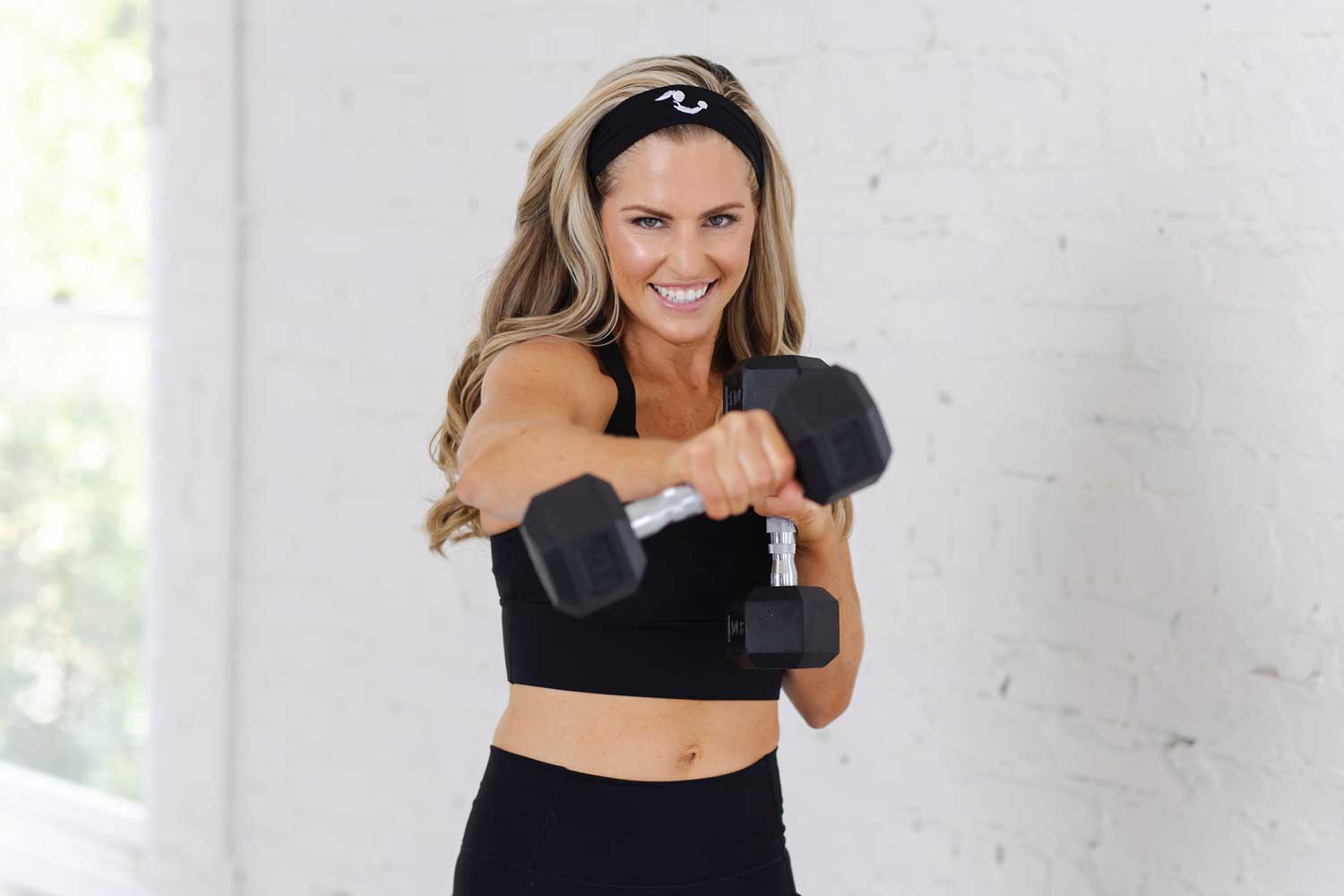Have you ever scrolled on the internet or social media and felt totally confused by conflicting fitness information? One minute you hear that a pushup is the BEST workout move for results. Two seconds later, you read an article stating that a pushup is the worst exercise move – ever. 😵💫 Who should you believe?
Today I’m breaking down the Top Five Fitness Myths that need to go away, and what to believe instead, according to the science.
#1 Lifting weights makes you bulky.
If I had a dollar every time I’ve heard this one! By now most of us have heard women don’t have enough testosterone to develop big bulky muscles, which is true. And while women have embraced strength training much more in the last ten years than the ten years before that, many are still afraid to lift heavy out of this fear.
Not only does the science tell us that women don’t have the hormonal makeup to bulk up, the literature tells us that strength training actually helps us lean out. A 2021 systematic review of 58 different studies concluded that “resistance training reduces body fat percentage, body fat mass and visceral fat in healthy adults.”
When you do see females with a larger muscular physique, they are usually athletes, and I can assure you they’ve worked long and hard to get there. For women to really gain mass, it takes hours and hours of very specific training, eating a very high calorie intentional diet, and usually, some other supplementation.
#2 In order to “tone,” lift lighter weights for higher reps.
This common myth goes hand in hand with #1. The idea of using light weights/high reps to “tone” and heavy weights/low reps for “strength” has been circulating for years. Entire fitness formats have been built upon this and marketed successfully to women. But the reality is, toning and strengthening go hand in hand, and come from overloading our muscles progressively. Most people associate looking toned with lean muscle definition, which, as mentioned above, is what happens to most of us as we train for strength and endurance. Of course, our nutrition plays a big role in body composition as well, but going lighter for longer duration doesn’t result in toning any more than lifting heavy does.
This is not to say that one type of training is superior; you know I love variety! Many workouts focus on lighter weights for longer durations(think: barre or burn or tempo training!), and result in improving muscular endurance. When we go heavier for shorter time frames, we are building more strength. Both are types of progressive overload that produce results!
#3 Cardio burns more calories than strength training.
Maybe you once believed this, and guess what? I did, too! Years ago many of us believed that we needed 30-60 minutes of extra cardio on the treadmill or elliptical, especially if weight loss was the goal. We know now (and you’ve probably experienced first hand with your BodyFit metabolic resistance training workouts!) that you can get your heart pumping with interval and circuit strength training workouts, often more so than your traditional cardio.
And, having lean muscle actually increases our resting metabolic rate so the more muscle we have, the more overall caloric burn, even at rest. One study concluded that weight training produced a 9% increase in resting metabolic rate in men, and a 4% increase in women.
Current research also shows that calorie burn after an intense strength training session can increase even 16-24 hours post workout (commonly known as EPOC). The bottom line: muscle drives our metabolism, and requires more energy to maintain.
#4 Lifting heavy and doing high impact exercises are hard on your joints.
Actually, lifting weights is one of the best things we can do for our joints! It strengthens muscles and tendons that support joints, reduces swelling and inflammation, reduces and helps prevent bone loss. The American Journal of Sports Medicine reports there are fewer injuries in weight lifting than any other sport.
#5 If you don’t get sweaty or sore, it’s not a good workout.
I get it, we’ve been caught in a “No pain, no gain” fitness culture for a while, so it’s common to associate sweat and soreness with success in a workout. Individuals respond differently to working out, and many factors contribute. Sore muscles and sweaty armpits (or lack thereof) can be an indicator or a challenging training session, it isn’t always. Listen to your body during the workout and know if you’re moving and you showed up, you’re successful!










